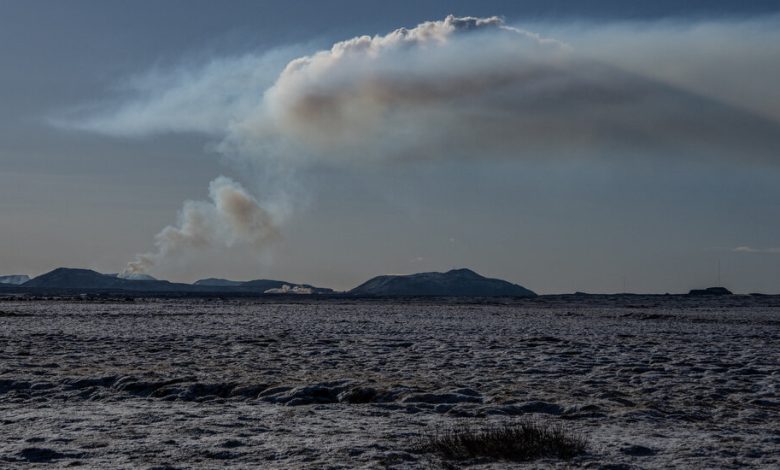Empty Roads and Spewing Lava: 4 Months Into Iceland’s Eruptions

The scene is as spectacular as it is dangerous: flowing rivers of shimmering lava and a dramatic plume of toxic gas.
That image has been the reality for much of the past four months in the Reykjanes Peninsula in southern Iceland, which the country’s tourism website has called a “geological wonder where lighthouses outnumber villages.”
A series of volcano eruptions began in December after hundreds of earthquakes shook the peninsula, cracking open a fissure that sent lava spewing into a residential neighborhood for the first time in more than four decades. The volcanic system has erupted several more times since then.
Grindavik, a fishing town of more than 3,500 people about 30 miles southwest of the country’s capital, Reykjavik, has been evacuated, and the nearby Blue Lagoon, a popular geothermal spa, has been largely closed since early November.

While much of life goes on in the rest of Iceland, the eruptions have had an effect beyond the peninsula, disrupting the tourism operations of a country that relies heavily on visitors.
Icelandair said it has seen a negative impact on bookings because of the threat of the eruptions. While the overall number of passengers carried by the airline in February increased compared to last year, the number flying to Iceland dropped by 8 percent, according to the airline.
While the eruptions continue, the situation has been “steady” this week, according to the Icelandic Meteorological Office, the country’s weather service. But lava continues to flow from three craters toward Grindavik, the service said.
The eruptions also produce high levels of gas pollution. The concentration of sulfur dioxide in the air is “very unhealthy,” according to the Met Office, which added that “people are likely to experience respiratory symptoms if exposed.”
The Blue Lagoon, a spa and hotel complex in Grindavik, is closed at the moment. It first temporarily shut its doors in November after thousands of earthquakes, signs of the impending eruption, hit the region.
The resort has reopened occasionally, but has been closed for more than 85 days since then, the hotel said in an email. It is currently on its sixth closure since Nov. 9.
Lava damaged several houses in Grindavik when it breached a defense wall that was supposed to route it away from the town.
Around the town, earthquakes caused cracks in the streets. Breaks in the roads have been filled with gravel.
The authorities continue to warn visitors to stay away from the eruption site. “The edges of the new lava field are unstable and large chunks of lava can fall suddenly,” the Met Office said,